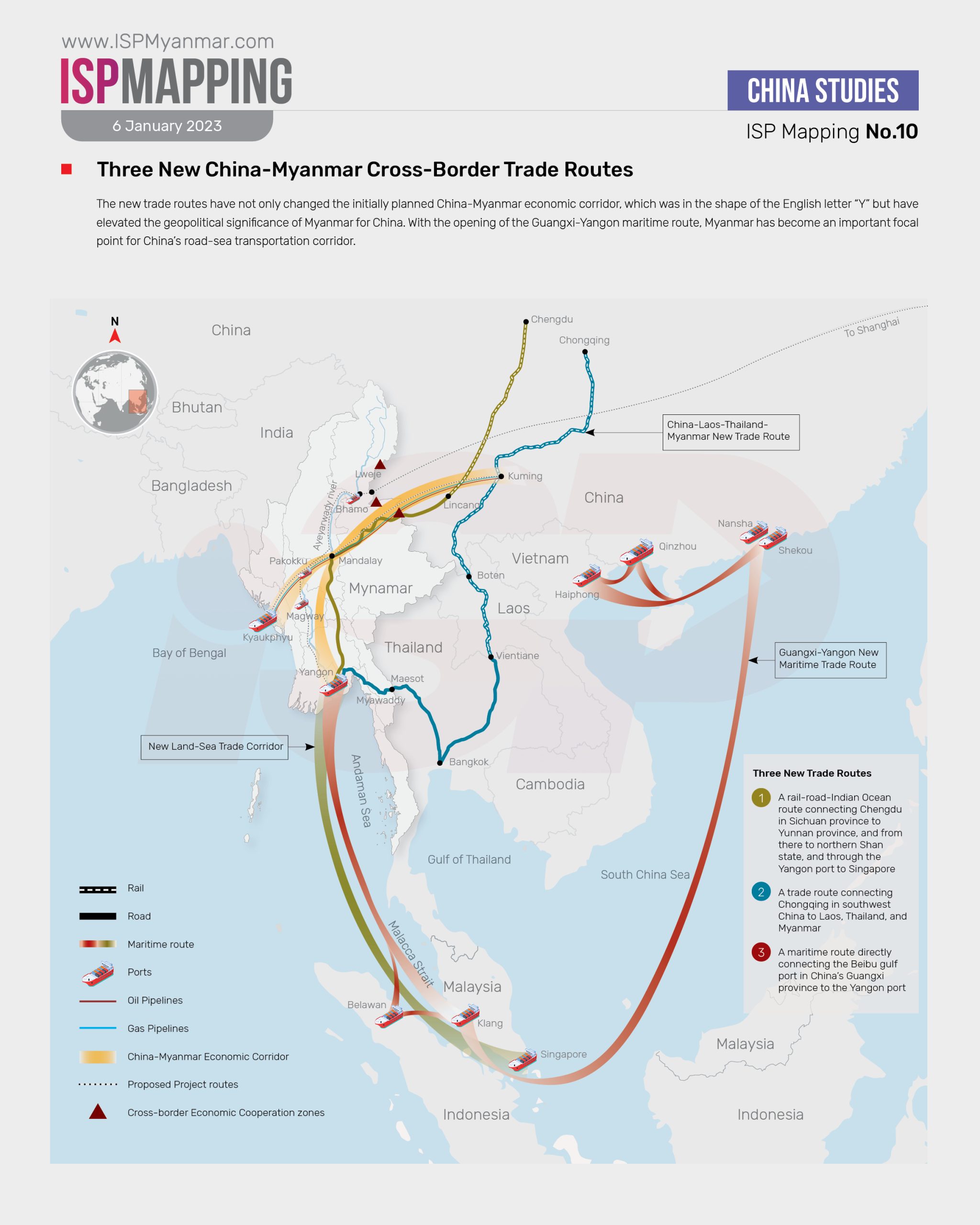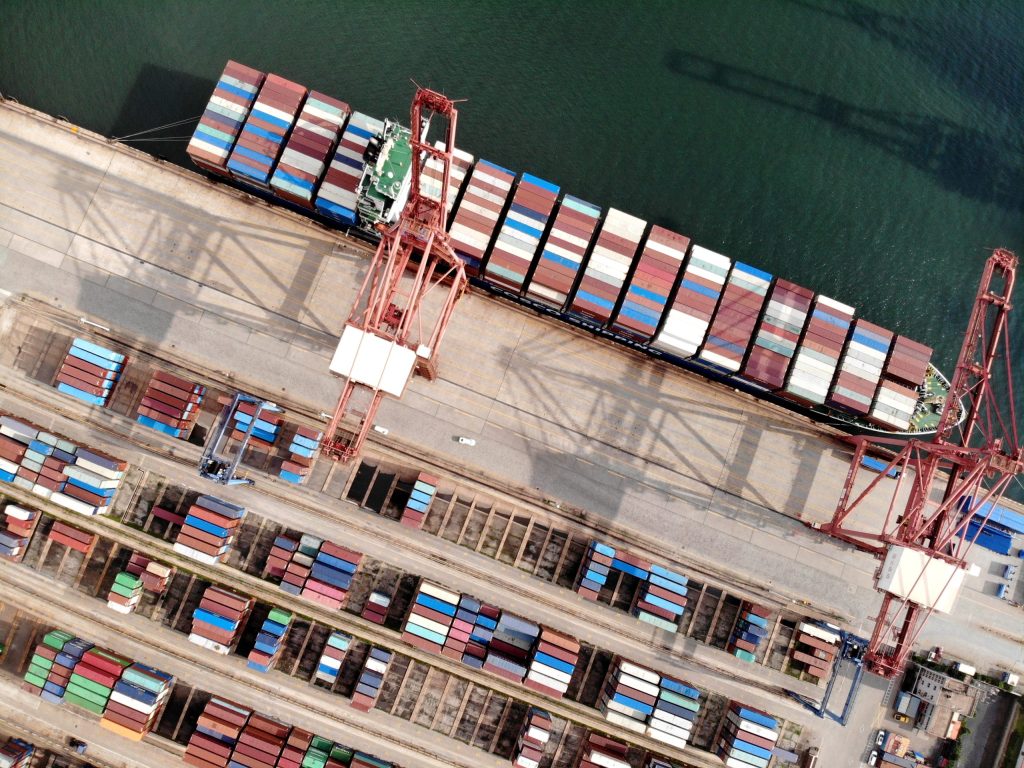Mapping No. 10

Since the coup in February 2021, three new rail-road-sea cross-border trade routes connecting China and Myanmar have emerged. These three routes were not initially part of the Belt and Road Initiative (BRI), and they facilitate access by China’s western provinces to the Indian Ocean and neighboring countries in the region. The three routes include:
- A rail-road-Indian Ocean route connecting Chengdu in Sichuan province to Yunnan province, and from there to northern Shan State, and through the Yangon port to Singapore
- A trade route connecting Chongqing in southwest China to Laos, Thailand, and Myanmar
- A maritime route directly connecting the Beibu gulf port in China’s Guangxi province to the Yangon port
These new trade routes have not only changed the initially planned China-Myanmar economic corridor, which was in the shape of the English letter “Y” but have elevated the geopolitical significance of Myanmar for China.
In terms of either the China-Myanmar Economic Corridor (CMEC) or Lancang Mekong Cooperation (LMC), which China is trying to implement in Myanmar, these new trade routes are connected to all projects under the Regional Comprehensive Economic Partnership (RCEP).
Infrastructure projects are also being implemented in Myanmar under the China-Myanmar Economic Corridor (CMEC), which is a part of BRI. Under this CMEC, roads and ports are also to be built in addition to the Kyaukphyu deep-water port that offers direct access to the Indian Ocean, and the Muse-Mandalay railway connecting the trade routes.
Moreover, cross-border transportation routes are being developed in addition to the cross-border economic cooperation under the terms of the LMC. The Wang Pong port upgrade in Shan state, the rail-road-Indian Ocean route connecting Yunnan province to Singapore through the Yangon port, and a trade route connecting Chongqing in southwest China to Laos, Thailand and Myanmar are all part of the LMC.
Myanmar has been an active member of the China-led Regional Comprehensive Economic Partnership (RCEP) since May 1, 2022. A new maritime trade route between Guangxi and Yangon connects the ports in RCEP member states. The Yangon and Kyaukphyu ports occupy strategic points under the projects led by China. With the opening of the Guangxi-Yangon maritime route, Myanmar has become an important focal point for China’s road-sea transportation corridor.
China has also tried for a long time to implement the “China-Myanmar Ayeyarwaddy River Economic Initiative,” or “China-Myanmar Maritime Silk Road.” This project aims to be a cross-border trade route through the Indian ocean. Related to this, China started rebuilding its
main roads connecting to Myanmar in the post-coup period. Under this project, ports are to be built on the Ayeyarwaddy river, which flows from North to South in Myanmar and will carry goods from China and other regional countries. Moreover, the Myanmar-China border economic cooperation zones will make the trade of goods between the two countries easier.
∎ Why does it matter?
Since the coup, new trade routes using railways, roads and waterways have emerged between China and Myanmar. On the other hand, implementation of the China-led RCEP and LMC plans have enhanced intertwining economic and geopolitical interests. These cross-border trade routes not only benefit China’s economy but also China’s regional geopolitical interests. These new routes not only open new forms of sea access which China has long coveted, but also help spread China’s influence over Myanmar both geopolitically and economically. As a consequence, regional countries including Myanmar will likely participate in China-led policies not only in investment and trade sectors but also in the sectors of information and security.
It is important to continually research and monitor China’s ongoing influence on Myanmar’s economic and geopolitical issues leveraged through the establishment of new trade routes since the coup.
∎ Other relevant readings
Measures taken by China in Myanmar and other regional countries can be researched in records and reports produced by independent media and other organizations. Statements from the Chinese Embassy in Myanmar, reports from Chinese news media as well as the Beibu Gulf Port website can also be utilized.

